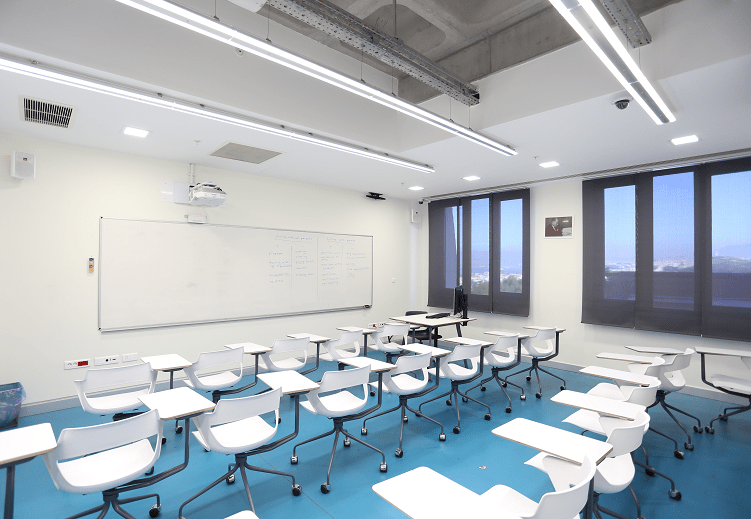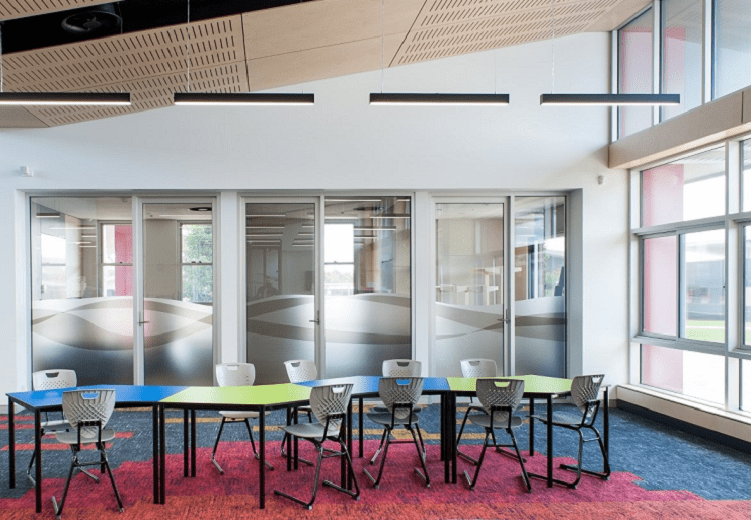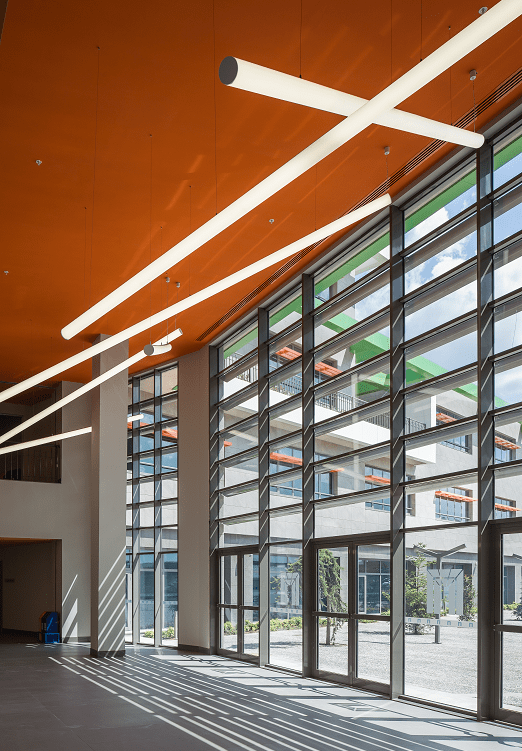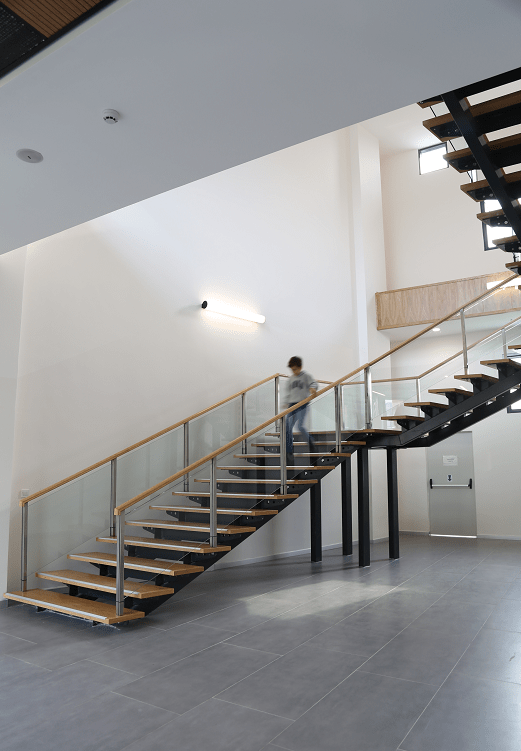Lighting for a Cognitive Educational Experience
Basics of Lighting
On a cloudy day, the illuminance on a surface under natural light reaches 10,000 lux and as much as 100,000 lux in bright sunshine. Indoors, a great deal less light needs to be sufficient. With an artificial lighting, 300 to 500 lux on horizontal work surfaces is widely enough for reading and writing. In classrooms, whiteboard lighting needs to be at least 500 lux. It has been reliably described that higher illuminance boosts motivation and makes for a greater sense of wellbeing.
Today’s modern education and learning systems are based on encouragement and challenge and high luminousity emphasize the learning process.
Visual learning process has great effectiveness. Independent researches show us good lighting plays a crucial role in helping increase student attentiveness and it’s a vital requirement for concentration and fatigue-free study. The luminaires shoud spread out natural inspirated light and stimulate awakeness of cognitive learning mood. Lighting contributes physiologically proper facilities for their sense of wellbeing.
Lighting Design for Schools
LED technology allows high controllability and a dynamic lighting installation permits a great deal more than just on/ off lighting. Cold light colors promote and stimulate concentration, warm light colors have a soothing effect on students. The lighting installation creates proper lighting conditions for all room users whatever the arrangement of chairs or desks. All walls including the rear wall, are should be well illuminated.
Student restaurants and cateens require a cheerful room atmosphere so that children who use them can feel comfortable, relax and quickly recharge their batteries. They do not normally stay long. Good lighting helps ensure that even in very short breaks the rapid regeneration people seek is possible. Canteens are also a place for communication, it is very important that faces, expressions and gestures should be easily recognisable. The standard DIN EN 12464-1 recommends 200 lux general lighting these areas.
Rigid seating layouts and unvarying “chalk and talk” practice in the classroom are now a part of the past. The look of the classroom changes according to needs, permitting both direct instruction and group work. In most of the classes when students present projects, for instance, the classroom becomes a stage and auditorium.
Corridors, foyers and stairwells are also communication zones and places where students spend breaks. Circulation areas, foyers, corridors and stairwells, lighting performs a vital function as an orientation and safety
Emergency Lighting
Emergency lighting solution in projects is an issue that counts. The functionality is vital and it’s more than just a must required under the law. Emergency and escape sign luminaires should be integrated into the premises and remove the risks may occure in a power failure in such lighting projects for schools and educational facilities.

FujiFilm Page

Erke







